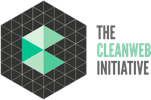Laser marking is an excellent solution for adding traceability to metal components. It can also add a touch of aesthetic appeal, making the component look more high-end. In addition, laser marking is perfect for tiny watchmaking components, as it doesn’t require any additional space on the part. We are experts in laser engraving systems and have worked in this industry for many years. We can help you choose the right system for your needs and provide you with training and support so you can get up and running quickly!
What are laser marking and laser engraving, and how do they work?
Laser marking and laser engraving are both processes that use lasers to create markings or designs on a surface. Laser marking is the process of using a laser to create text, symbols, or graphics on a surface. Laser engraving is the process of using a laser to cut away material from a surface, leaving behind a raised image or design.
Laser marking and laser engraving are both exact processes, making them ideal for applications where accuracy is essential. In addition, laser markings and designs are typically obvious and easy to read, making them perfect for precision tools and components. Lasers can also create very intricate designs, making them a popular choice for die-casting and tiny watchmaking components.
Both laser marking and laser engraving can create markings on metal surfaces. Metal surfaces can be difficult to mark with traditional inkjet printing or stamping methods, so lasers offer an alternative method for creating markings. In addition, lasers produce exact markings, which makes them ideal for applications where precision is required, such as manufacturing precision tools or tiny components.
Laser marking and laser engraving offer several benefits over traditional methods of marking metal surfaces. They are both exact processes, which results in clear, easy-to-read markings. Lasers can also create intricate designs, making them a popular choice for detailed applications such as die-casting and tiny watchmaking components. Metal surfaces can be difficult to mark with other methods, but lasers produce highly visible and accurate markings. If you need a precision tool or component marked with clarity and accuracy, laser marking or laser engraving may be the best option.
If you’re looking for a precision tool or component that needs to be marked with clarity and accuracy, laser marking or laser engraving may be the best option. Both processes are exact, which results in clear, easy-to-read markings. Lasers can also create intricate designs, making them a popular choice for detailed applications such as die-casting and tiny watchmaking components.
How to choose the right laser marking or laser engraving system for your business
To choose the best laser marking or laser engraving system for your business, you should consider what type of markings and designs must be regularly made. For example, do you have many precision tools that require detailed markings? If so, then it may be better to invest in an expensive but powerful industrial-grade laser marking system. However, if your business only requires occasional detail work like die-casting or watchmaking components, then there are many lower-cost solutions available as well.
What is the difference between laser marking vs. engraving? Laser marking and laser engraving are both processes that use lasers to create markings or designs on a surface. Laser marking is the process of using a laser to create text, symbols, or graphics on a surface. Laser engraving is the process of using a laser to cut away material from a surface, leaving behind a raised image or design.
Tips for getting the most out of your laser marker or laser engraver:
– Clean the laser lens regularly. This will help keep your laser in good working order and prolong its useful life.
– Keep a consistent distance between the surface being marked or engraved and the laser head on your machine. If this distance changes too much during operation, you may have to adjust settings such as power level or speed to compensate for these differences.
– Use high-quality consumables for optimal performance from your system: lenses should be cleaned with alcohol before use; marking fluid should always be fresh (change every few months); replacement parts like nozzles are available if they become worn out over time.’




